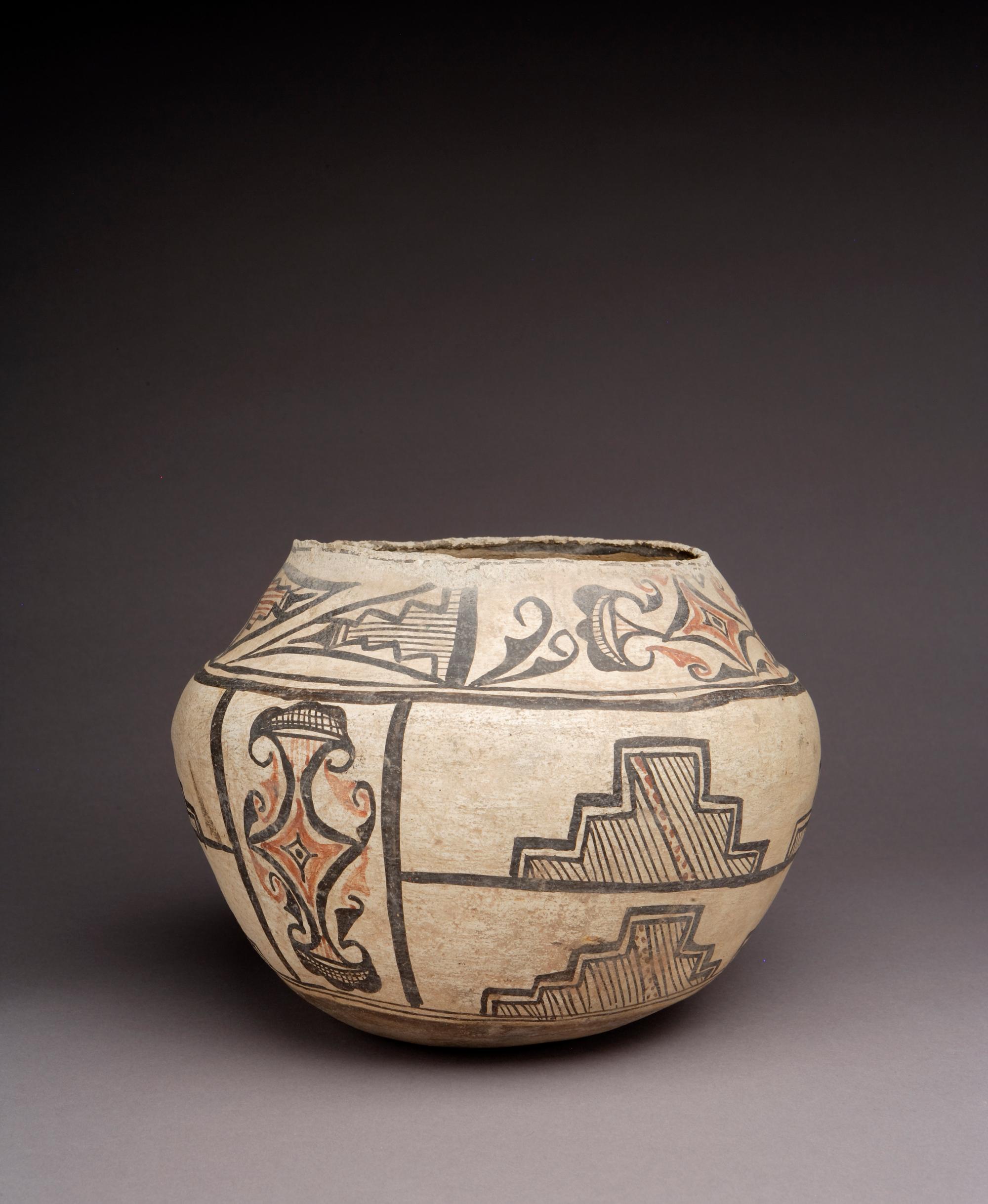
Photograph by Addison Doty. Copyright 2010 School for Advanced Research.
Water jar | K'yabokya de'ele
Date: c. 1910
Artist or Maker: Unknown
Dimensions:
Dimensions: 24.2 × 30.5 cm (9 1/2 × 12 in.)
Weight: 2.5 kg (5.45 lb.)
Medium: clay | paints
Credit Line: Indian Arts Fund purchase for the permanent collection.
Place Made:
Zuni Pueblo, McKinley County, New Mexico, Southwest, United States, North America
Object Number: IAF.1366
Not on view
Tribal Collection Review RemarksJim Enote and Octavius Seowtewa during collection review visit December 7 and 8, 2010 (Events Record “Collection Review: Zuni Tribe, Review 5”): The rim of the jar is eroded and has lots of chipping. It is possible that it was purposely pecked at as an antiquing method, but this cannot be definitively determined. The neck designs include step clouds with rain hatching and a design that may represent flowers with concentric four-sided stars inside them. A double line with a break separates the neck band from the body band. The body has two bands with step clouds that contain rain hatching and dots that may represent hail/seeds/planting holes. The same flower design found in the neck is also in two vertical design compartments on the body. A double line with a break separates the body from the base. The base is solid black and does not have much wear. “PX 91” is written on the interior and crossed out.
The word for a water jar in Zuni is “k'yabokya,” which translates to “water container” in English. The intended use for these jars was to store and carry water, but they could also be used to store other items.
In Collection(s)
The Indian Arts Research Center, in collaboration with Native American community scholars, strives to present accurate collections records. Records may be updated as new information becomes available and is reviewed with the Native American community having cultural affinity to particular items. Please write to iarc@sarsf.org if you have questions or concerns related to the documentation.
